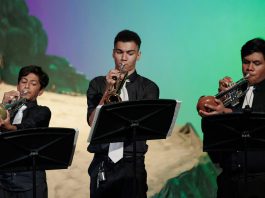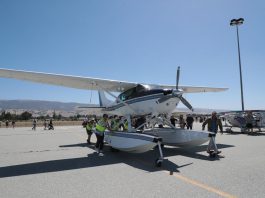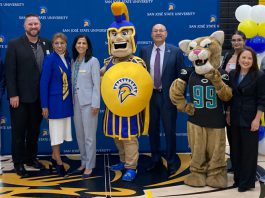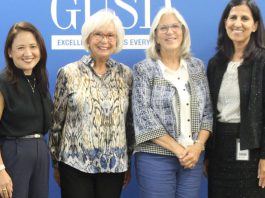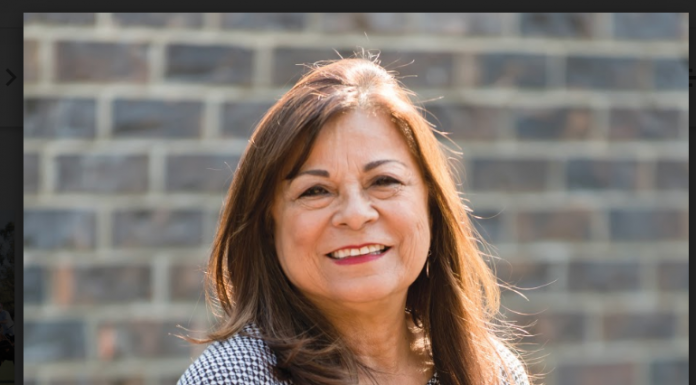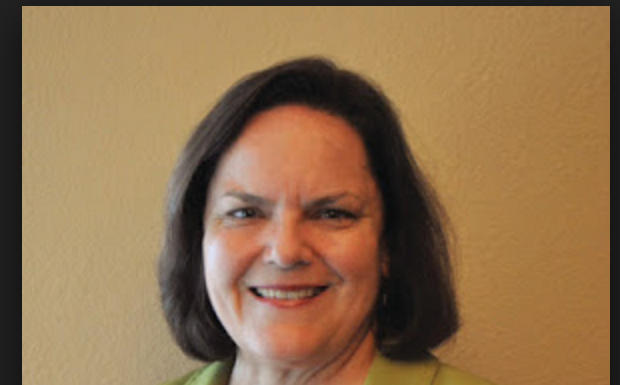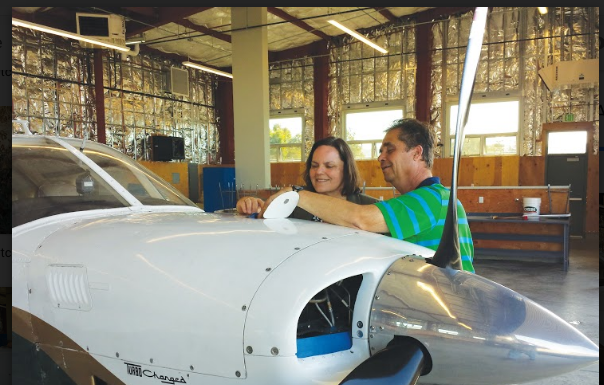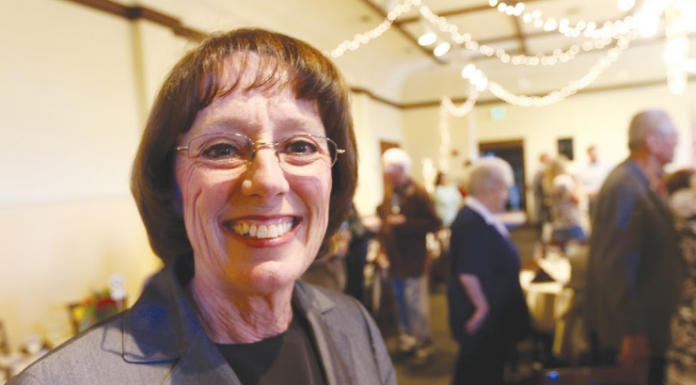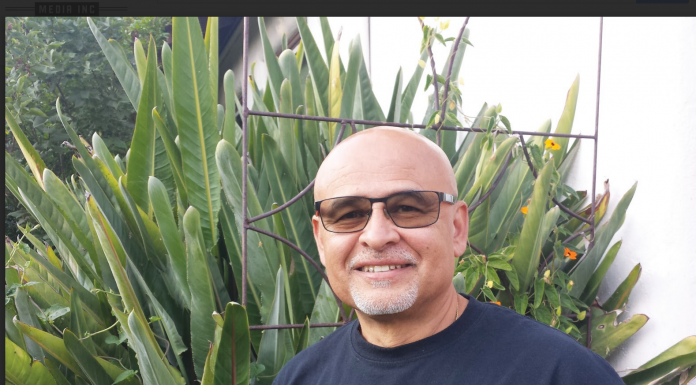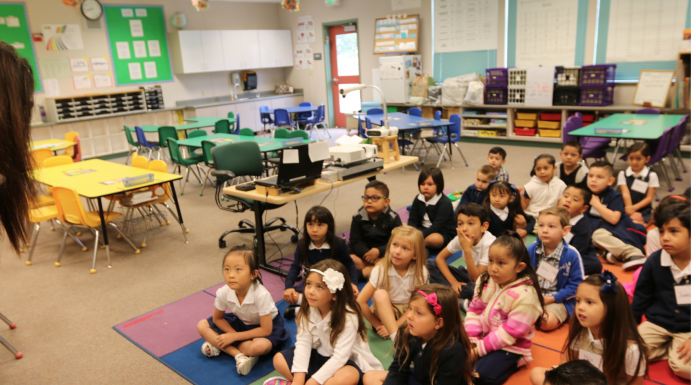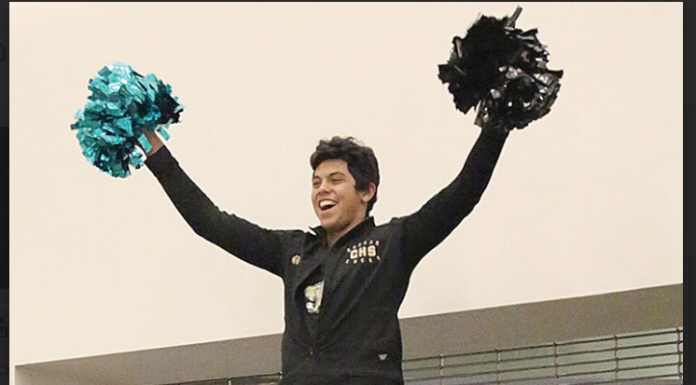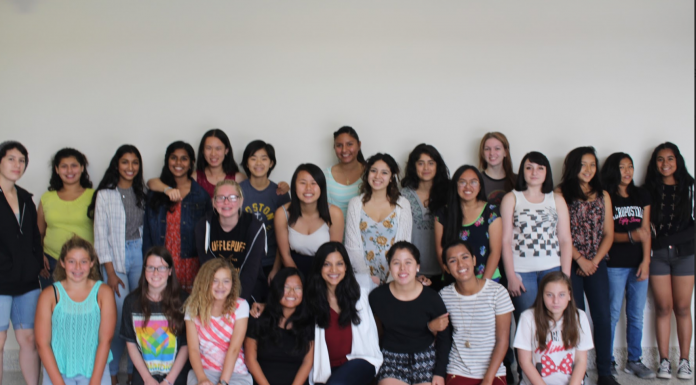Meet the Candidates: Rachel Perez
In the first district election in its nearly 100-year history, two candidates are vying for the one contested seat on the Gavilan Joint Community College District Board of Trustees.
Gav gets $5 million for science, math
GAVILAN COLLEGE, CA - The United States Department of Education yesterday announced that Gavilan College will be a recipient of $4,737,455 in federal funding for science, technology, engineering and mathematics (STEM) education through the Hispanic-Serving Institution (HIS) STEM Program. The college learned of the award during a visit by a Department of Education officer, who was on campus to review the progress of the two prior grants. President Kathleen Rose said: “While touring campus he shared the news of the award of the STEM grant that will allow Gavilan to continue to focus our efforts on student internships, expand the math lab, and position students for science transfer programs with our partner institutions.” The grant to Gavilan College is for an initiative titled “Strengthening Hispanic STEM Students: Comprehensive Support, Guided Pathways, Renewed Learning.” It’s purpose is to increase transfer and degrees among Hispanic, low income, and first generation STEM students. One of the ways this will be done is by increasing support for these students. The college will use STEM funds to create an equipped, centralized STEM Support Center. The grant will also ensure that STEM students have access to a STEM counselor, and that prospective students and their families are receiving good information about STEM education and career options through outreach to the local communities. The Summer Bridge program for pre-freshmen and a Transition Academy for second year students will help STEM students transition from high school to college, and then from Gavilan College to a university. Another goal for the grant is to strengthen STEM pathways to transfer. This will help students navigate the many choices before them, and plan their educations to achieve their goals. Gavilan College will be developing “STEM Guided Pathways,” which will be streamlined program maps and articulation agreements with San Jose State University, creating a clear pathway from Gavilan College to a bachelor’s degree in the sciences. The third component of the grant is to renew STEM teaching and learning opportunities. Students and faculty will be able to participate in an inclusive STEM culture through the STEM Support Center. Faculty will also pilot new techniques and high-impact practices in their instruction. Students will have access to accelerated remedial math and English and supplementary instruction in their introductory STEM classes, as needed, and continued access to student research internships in collaboration with SJSU faculty. “We are thrilled to be able to continue this important work, showcase the stellar work of our faculty, and leverage the relationships with our industry and community partners through internships and apprenticeship programs" said Dr. Rose. This award follows two prior STEM grants to the college, from 2008-2010 and from 2011 - 2016. The three grants combined have brought a combined $14,310,789 in federal funding to the community. Fran Lozano, Gavilan College Dean of Liberal Arts and Sciences said: “STEM I provided much-needed science equipment; STEM II helped create indoor and outdoor instructional spaces, including the Native Garden and Arboretum; and STEM III will give us a STEM Support Center where students can congregate, hear lectures, study, share experiences, and grow in the subjects they love.” According to Dr. Rose, “This is yet another reason for the community to come see what is happening at Gavilan College today!”
Gavilan takes to the air
After a six-year wait, one of most successful programs at Gavilan Community College hosted grand opening ceremonies Tuesday for its new home at the San Martin Airport.
Gilroy Schools Improving, but Still Low
In the newest state test results, Gilroy schools showed improvement over last year and held their own or slightly exceeded state scores, but in every grade and category scored below other Santa Clara County schools.And a majority scored below minimum state standards, 52 percent in English language arts and 60 percent in math. For Hispanics, who make up roughly 80 percent of all district students, it was 59 percent and 69 percent, respectively—the so-called achievement gap educators statewide have tried to close.In five of the seven grades tested, more than 50 percent of Gilroy students on average did not meet California’s minimum standards in English and math.Statewide, only in third grade math, and in seventh, eighth and 11th grade English did 50 percent or slightly more exceed state standards, according to results released Aug. 24 by state Superintendent of Schools Tom Torlakson and the California Department of Education.The Gilroy Unified School District, in a press release issued Monday, put a positive spin on the results and acknowledged its scores lag behind those of other Santa Clara County districts while holding up well against state averages.“We’re happy to see that our students have matched the overall state performance in [English] and that we continue to do better than the state average in math,” said district Superintendent Debbie Flores in the press release.“When considering our scores in tandem with our county, we’re clear there is still work to do as Santa Clara County traditionally outperforms most of the state. But we’re seeing our district do quite well in comparison to other counties near us,” she added. The other counties were not identified in the press release.Gilroy students were on par with other California students in achieving the state’s goal of meeting or exceeding state standards, according the GUSD press release.“Overall 49 percent of GUSD students in English Language Arts and 40 percent of students in math met this goal,” according to the release.GUSD planned to send student scores to parents this weekThe California Assessment of Student Performance and Progress, CAASPP, is in its second year of use. It replaced the long-used STAR test and is based on the state’s Common Core Standards.In a press release, the state Department of Education said California students had made “significant progress” compared to last year’s results, adding that “nearly half” met or exceeded English standards and nearly 40 percent did so in math.Torlakson expanded on the positive theme in the press release and noted improvement is needed.“The higher test scores show that the dedication, hard work, and patience of California’s teachers, parents, school employees, and administrators are paying off.“Of course there’s more work to do, but our system has momentum. I am confident that business, political and community leaders will join parents and educators to help continue supporting increased standards and resources for schools,” he said.More than 3.2 million students in grades three through eight and 11 took the CAASPP test, according to the Department of Education.All GUSD, Santa Clara County and California CAASPP scores can be found at the DOE website at this link: http://bit.ly/2ca57Ms.Gilroy’s charter school, Gilroy Prep, part of the Navigator schools group, outperformed by far all of GUSD’s regular public school classes. Of the four GPS grades tested, three through six, an average of 82 percent of students in English and 67 percent in math met or exceeded state standards. For Hispanics, 78 percent in English and 67 percent in math did so.Kevin Sved, Navigator Schools CEO, said in a release issued Aug. 24, “The 2016 results prove the success [last year] was not a one-time thing but, instead, a reflection of the multi-faceted approach Navigator has been employing since welcoming our first students in 2011.” Navigator Chief Academic Officer James Dent said, “Learning we exceeded our 2015 numbers is both affirming and inspiring. We founded Navigator Schools to provide an alternative to our local underserved families and watching our dream come to reality is an incredible feeling.”At Gilroy’s eight other elementary schools, the lowest performing in English were Glen View, El Roble, Eliot and Antonio Del Buono, with 71, 67, 67 and 66 percent, respectively, of all third, fourth and fifth grade students combined scoring below state standards. For Hispanic students at those schools, the percentages were 75, 70, 76 and 66 scoring below.Math results for those same grades ranged from 71 and 70 percent below state minimums at Antonio Del Buono and Glen View, to 69 percent at Eliot and El Roble.Top performing elementary schools in English were Luigi Aprea and Rod Kelley, where 60 and 55 percent of students, respectively, met or exceeded state standards.In math, those same schools were on top with 56 and 55 percent meeting or bettering state standards.Scores for Hispanics districtwide were below those of all students—59 percent of Hispanics compared to 52 percent of all students scored below state standards in English language arts. The numbers were 69 percent vs. 60 percent in math.There were promising results, too. In grades three through seven, for example, although in all but one result more than half of students scored below state standards, there was some improvement over last year.The number of students meeting or exceeding state standards edged upwards when compared to those same classes’ performances the year before in both subjects. The only exceptions were fourth and fifth grade math results, which dipped.At Brownell Middle School, the number of students who met or exceeded California’s standards in English climbed by 13 points to 61 percent and math was up six points.At South Valley Middle School, English scores at or above state standards were up eight points, to 41 percent, while the math percentage was up seven points.English scores were up by five percentage points at Solorsano Middle School.At the high school level, the CAASPP tests 11th-graders. As at the other grade levels, students did better in English than math and a majority had good results in the former, exceeding state averages.At Christopher High School, 57 percent of students met or exceeded state standards in English, while at Gilroy High School the number was 53 percent. The state average was 49 percent.Math performances were lagging. At CHS, 75 percent of 11th-graders did not meet state standards, while at GHS 67 percent fell below. Statewide, 68 percent of 11th grade students scored below state math standards.
Rod Kelley Principal Luis Carrillo Retires
For the first time in years, Luis Carrillo was absent when the new school year started this week.
Photos from the First Day of School at Las Animas Elementary
A lot of parents were sad to say goodbye, especially to first-day-of-school kindergarteners in four buzzing classrooms at Las Animas Elementary School. To avoid separation issues, the school discourages parents from hanging around the school or volunteering in classrooms until their children are acclimated to being away from them.
That was Quick: School’s Back!
With a record number of students expected to swell Gilroy classrooms this year, school officials this week launched a citywide poster campaign aimed at getting every one of them to show up on the first day of classes, Aug. 16.“What we typically see is 95 to 96 percent show up on the first day. Three to four percent don’t show up till the second week of school,” said Gilroy Unified School District Superintendent Debbie Flores.“That impacts the child, what they have already missed. So we are really urging parents to send their children to school next Tuesday so they can get everything that is covered in that week and not be behind,” she said, adding, “what we’d really like to see is every student in school the first day.”The district also loses about $40 per day per student in state funding when students miss school.The attendance posters will be displayed in storefronts, on school grounds and elsewhere around the city, according to Flores.The GUSD student population this year is projected to exceed 11,500 and could reach 11,600. That’s more than ever before, and within five to seven years the number is expected to be 12,000, Flores said.The growth is being pushed by new housing developments in western and southern Gilroy, mostly in the areas served by Gilroy High School, Solorsano Middle School and Las Animas, Luigi Aprea, Rod Kelley and Glen View elementary schools.And with home construction by the hundreds continuing apace in new subdivisions along Hecker Pass Highway and Santa Teresa Boulevard, student numbers will continue to swell, underscoring the need to increase classroom capacity for those neighborhoods, Flores said.Those increases will come by way of a planned new elementary school, the top priority for the $170 million school bond measure approved June 7 by voters, and an expansion at Gilroy High School. Solorsano has room for 200 to 300 more students, according to Flores, and a new wing built at Las Animas School will help absorb the influx of new students.For the coming session, GUSD hired four new principals and assigned an interim principal at Mt. Madonna High School. New principals will serve at South Valley and Brownell middle schools and Luigi Aprea and Rod Kelley elementary schools.It’s the largest number of new principals she’s hired since starting in the district in 2007, Flores said.“I am very excited, they are going to do a great job,” she said.GUSD also hired 85 new teachers, up from last year’s 80, for a total of about 550. Some were hired to bolster the special education program, but most will replace teachers who retired or moved away.Also, 25 new hires were made in the classified employee ranks, which includes janitorial and clerical staff, and in the paraprofessional staff, who work in classrooms.Classes start at GUSD’s 15 campuses on Tuesday, Aug. 16.In addition to GUSD’s regular public schools, student numbers are up at Gilroy Prep School, the district’s successful charter school that operates under the Navigator Schools banner, where classes start Wednesday, Aug. 17.With the addition of a 7th grade to the previous K-6 range, the student population at GPS is at 480. The school adds a grade each year and is exploring high school grades in the future.GPS also added two new classrooms for the new grade and hired four new teachers to add to its roster of two teachers and two small-group instructors per grade.This year also sees the addition of a “robust enrichment” program that includes art, Spanish and LegoRobotics instruction, according to Kirsten Carr, director of community outreach for Navigator, with also operates Hollister Prep School in that city.Navigator also has a new CEO, Kevin Sved. Founding CEO James Dent is the schools’ new chief academic officer.“Our ability to focus on teacher coaching and professional development will only continue to grow and strengthen,” Carr said in an email. “That intense coaching leads to even stronger academic support for the classroom and success for our students.” Navigator’s test scores consistently are among the highest in the state.
Schools’ first PIO resigns
Gilroy schools’ first public information officer has resigned to take a similar job in Sunnyvale that pays $46,000 more a year.
Navigator Charter Schools Have New CEO
The organization that runs arguably the most successful schools in Gilroy and Hollister has a new chief executive officer.
Miss CEO is a Hit
Not content with just “leaning in,” a new program launched in Gilroy this summer aims to close the success gap and equip young women and girls with critical leadership skills long before they send out their first resume.



